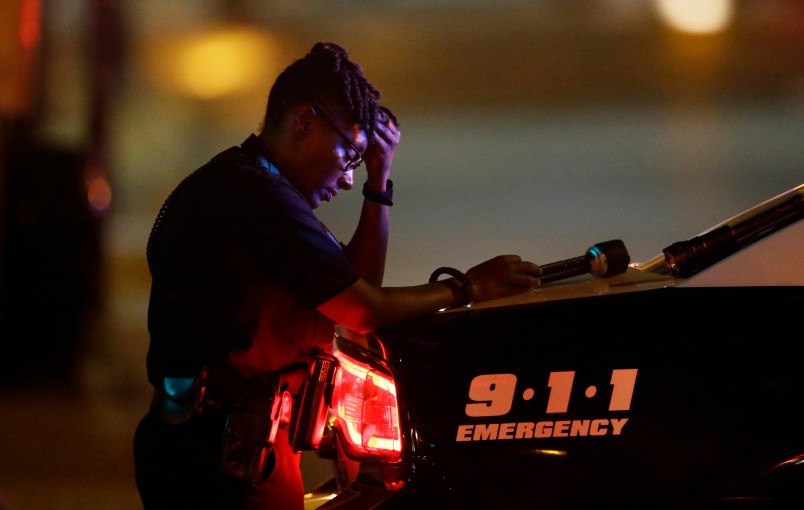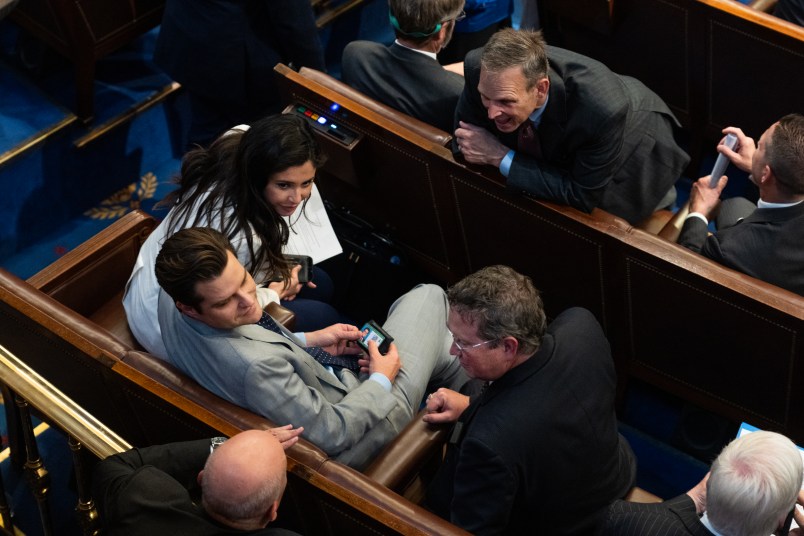Since I mentioned the 1968 analogy in my initial post this morning I want to return to the subject briefly. In response to that post and that analogy we’ve had responses from a number of baby-boomer TPM Readers with living memories of that year. A couple have written saying it feels the same and anticipating various dystopian futures. But the great majority have said some version of ‘No way, it was so much worse. You can’t imagine.’ (TPM Reader MR‘s version is one example I’ve published.) Indeed, on many fronts we don’t have to imagine. Indeed, listen to this from TPM Reader and poli sci professor TL. “I was 21 in 1967. I had a colleague once who was in the 82nd when it got sent to Detroit that year. He said they were suppressing fire from the buildings with .50 machine guns and 75mm RCLs; nothing else worked.”
Machine guns used to quell riots in a major American city. It almost beggars belief.
The Detroit riots occurred in July 1967. But ‘1968’ isn’t so much a calendar year as an inflection point in American history which is not entirely bounded by those 12 months, the product of numerous causes but most glaringly the collision of the fight for African-American equality and the escalating American war in Vietnam.
Many younger Americans have vivid memories of the LA riots of 1992 in which 55 people died and some 2,000 were injured. But the late 1960s witnessed a series of comparable riots across the country. Indeed, in a number of cases in cities which simply never truly recovered. Watts 1965, 34 dead, over 1000 injured. Detroit 1967, 43 dead, over 1000 injured. Newark 1967, 26 dead, almost 1000 injured.
As you’ll note, these examples were all before calendar 1968 and don’t include the numerous urban riots during 1968 itself or other ‘smaller’ ones during the preceding years. Indeed, a good deal of what made 1968 ‘1968’ was the way in which a building momentum of violence, civil unrest and a seeming breakdown of the society itself, which had been escalating in the two or three previous years, built to such a pitch of intensity that it seemed the entire society might be overturned, that there might never be a going back. I say all this as a student of the past rather than a witness. I was born in February 1969.
By so many measures — civil disorder, political breakdown, assassinations, death tolls, the U.S. Army operating in major American cities — there is truly no comparing that era in our country’s history with today. As Jon Chait argues here, there is an underlying societal unity, prosperity and consensus which the headlines, political and cultural polarization and atrocities obscure. And yet, I don’t think we can quite, entirely close the book on the analogy.
Like I am, Chait is a white man in his 40s who has been given much of the best of what our society has to offer. He also does not politically identify with his whiteness. This is no knock on Chait, who is a friend. All of these apply entirely to me as well. Indeed, when I see these things, part of me thinks, how can everything be coming apart when there’s so much that is going so well?
The improvement and all that is good is all right there to see. I see it. And yet revolutions mostly tend to occur not when things are dire but when they’re improving. Just not fast enough. The phenomenon of revolutions or protest when change is not keeping pace with rising expectations is a well-known one in sociology and political science.
You can’t look at the scene today and not see that the Chief of Police in Dallas is black, numerous officers are black. And let’s just say it, the President of the United States is black. And yet you see the video of Philandro Castile dying after what appears to have been a routine traffic stop in which he apparently did nothing but try to pull his wallet out of his pocket. Or the video of Alton Sterling, different set of facts, comparable end result. The Black Lives Matter movement is only a part, perhaps the most pointed and visible part, of a rising movement of African-American political self-assertion which, as an outsider to it, seems like a final demand not for improvement and progress but the whole package, intact and total: equality, prosperity, the dignity of the body and life itself. The whole thing.
I mentioned before that I, and I think Chait, don’t politically identify with being white. I want to be clear what I mean by this (a point I’ll return to in a moment) and what I know it definitely does not mean. At a traffic stop, I’m white, no matter what my politics, empathy, awareness of this reality or that. I’m white, period. My kids are white too. And the metaphoric traffic stop plays out in numerous other social situations. That’s a layer of protection I carry around me no matter what. It inevitably shapes what I see when I watch these horrific videos — the mix of outrage or anger or fear. I feel a lot of outrage and a lot of anger but I don’t feel much fear because, frankly, I’m pretty sure nothing like that is going to happen to me. All of which is a protracted way of saying I don’t think I can quite know what year it is for my black brothers and sisters watching those videos.
Then there’s the entirely other side of the coin.
Why is Donald Trump the presidential nominee of a major political party? As that famous Simpson’s line put it about Fox News, Not Racist but #1 Among Racists! The KKK and “white nationalists” say they feel like the tide is turning in their direction for the first time in decades. Perhaps in spite of himself, but even so Trump is re-normalizing the old anti-semitism that had seemed entirely written out of acceptable public life in America. Not ‘anti-Semitism’ as an attack phrase against people who don’t support Israel enough. But real anti-Semitism with global Jewish cabals, hook-nosed cartoons, jokes about ovens and all the rest.
None of this is normal. It requires an explanation.
There are numerous roots of Trumpism, some deep-seated, others entirely contingent. They include economic grievances which are legitimate and real. Yet Trump might plausibly, if not necessarily, be described as a madman. The fact that the general election version of his campaign (which has to the surprise of many been even more outrageous and transgressive than the primary version) struggles to get below 40% in the polls is to a degree a measure of the degree of political polarization in the country — fertile and disquieting ground for another post. But the overriding drive of Trumpism is that a substantial minority of our fellow citizens believes their country, white America, is dying or being taken away from them. This is rooted in the rising demands of African-Americans, tens of millions of new Americans and now their children from Latin America and other parts of the world, and newcomers with a religion that to many signifies alienness, violence and threat.
I’ve written about this in numerous posts over recent months, sometimes explicitly, at other times obliquely. But we can’t understand this phenomenon unless we understand that from a certain perspective what they fear or are angry about is true. The America in which whites made up the vast majority of citizens and held a monopoly on political power not simply because of racism but, in most parts of the country, by the fact of numerical majorities is unambiguously coming to an end. You see it in everything from birtherism, to opiate death rates to a constant theme of our politics. Is this a threat or a death? I’m entirely untroubled by this fact. Indeed, I welcome it, as do millions and millions of Americans. But there are millions of Americans who do not. You can’t be an observer of contemporary American politics and not see that very clearly.
This is what I mean by how or whether one’s political identity is bound up in one’s whiteness or to be more precise whether it is bound up with the political and social dominance of white people. If you do see things through that prism the apocalyptic worldview of many Trumpites starts to make a good deal of sense. For many more, it isn’t the end of the world but it is a source of persistent and sometimes intense anxiety.
2016 is definitely not like 1968 for all the reasons Chait in his way and TPM Reader MR in his way note. American society isn’t close to tearing itself apart in any remotely comparable way. Mainly I agree. In almost every way I agree. Except not quite. Set aside for a moment who you think is right and wrong and see that we have two groups in our society with deep sets of grievances pointing in very different, indeed oppositional directions. Will we get through it in one piece? I’m quite confident we will, for all the reasons I noted above. But it also creates a distinct tension and instability in our society and our politics, a lot of which we’re seeing play out today.







